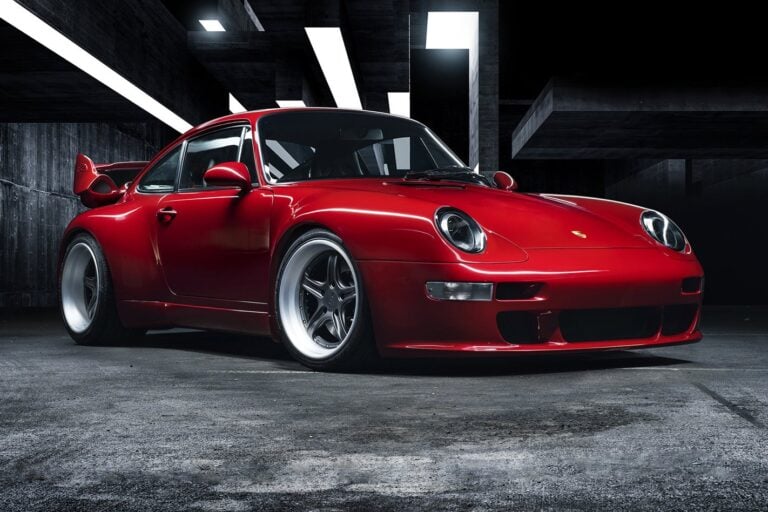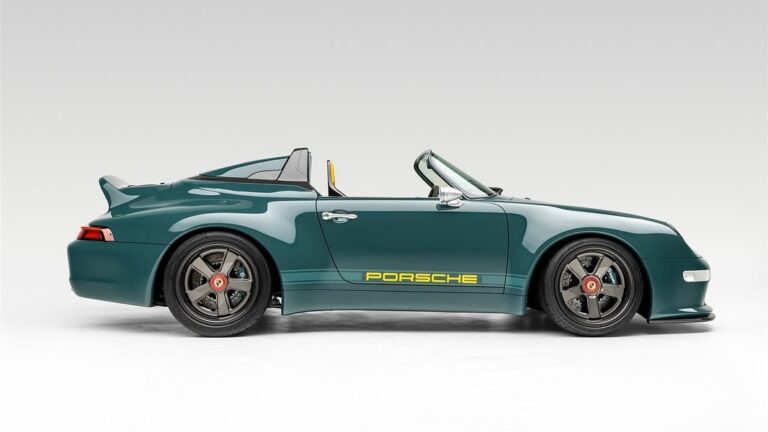Things we like
- Theatre
- Accessibility
- Dynamics
- Stamina
- Exclusivity
Not so much
- Expensive
- Sold out
- Long-ish gear throw
- On-road compromises
We’re on route 243, climbing out of Banning, up Mt San Jacinto before heading back over to Palm Springs. It’s warm, even for California, the unseasonable heat particularly welcome today, because, besides the rakish windscreen borrowed from a 964 Speedster, there’s no concessions to weather protection with the car I’m in. I first visited Gunther Werks back in 2017 to drive its 400R. That prototype car became the Coupe, a car that Gunther Werks is just now completing its 25-production run of, with each model individually commissioned by its exacting customers. This is their next model, the Speedster.
Like the Coupe the thinking behind the Speedster is a ‘what if?’ question. Initially proposed by Gunther Werks owner, Peter Nam, specifically, Nam asked what if Porsche continued to build air-cooled 911s and applied the same thinking that it does to the modern day GT3? The answer is the best 993 I’ve ever driven, though this Speedster’s making me re-consider that. Like the Coupe, the Speedster will be built in a run of just 25, and if you’re interested, you’re too late. It’s sold out. No mean feat for a car costing in excess of $850,000 if you’ve selected a few options, as, I’m told, everyone does.
Technically, and unsurprisingly, it’s nearly identical to its Coupe relation, though the body’s required a lot more strengthening, because while the 993 cabriolet was reasonably stiff back when it was launched, things have moved on a bit since then, and the Speedster’s packing a bit more punch.

Gunther Werks approached Trevor Harris to give the Speedster the stiffness required to exploit the changes they make to it. Harris’s CV covers designing cars to compete in everything from Pikes Peak to F1, so he’s usefully qualified. His input to the Speedster gives it a torsional stiffness figure that’s 50 per cent greater than that of a stock 993 coupe.
To enable that he’s double walled the sills, while there’s also a latticework of strengthening, as well as rollover protection in that clamshell area covering where the rear seats once were in the donor Cabriolet’s body. The entire body is built from carbon fibre, which means even with all the additional stiffening, the Speedster weighs in at just 1256kg.
This stiff skeleton has allowed Gunther Werks’ chassis guru, Cary Eisenlohr, of Eisenlohr Racing Products, a hugely stable platform to hang the suspension off. Here, on the Speedster prototype, that means Gunther Werks optional JRZ electronic set-up.
You’ll not have missed the wider front and rear, that width increase applied to give a square track. The tyres underneath those carbon fibre wings are huge, with the lightweight 18-inch front wheels measuring 11-inches wide, shod with 295/30/18 Continental ExtremeContact Sport tyre.
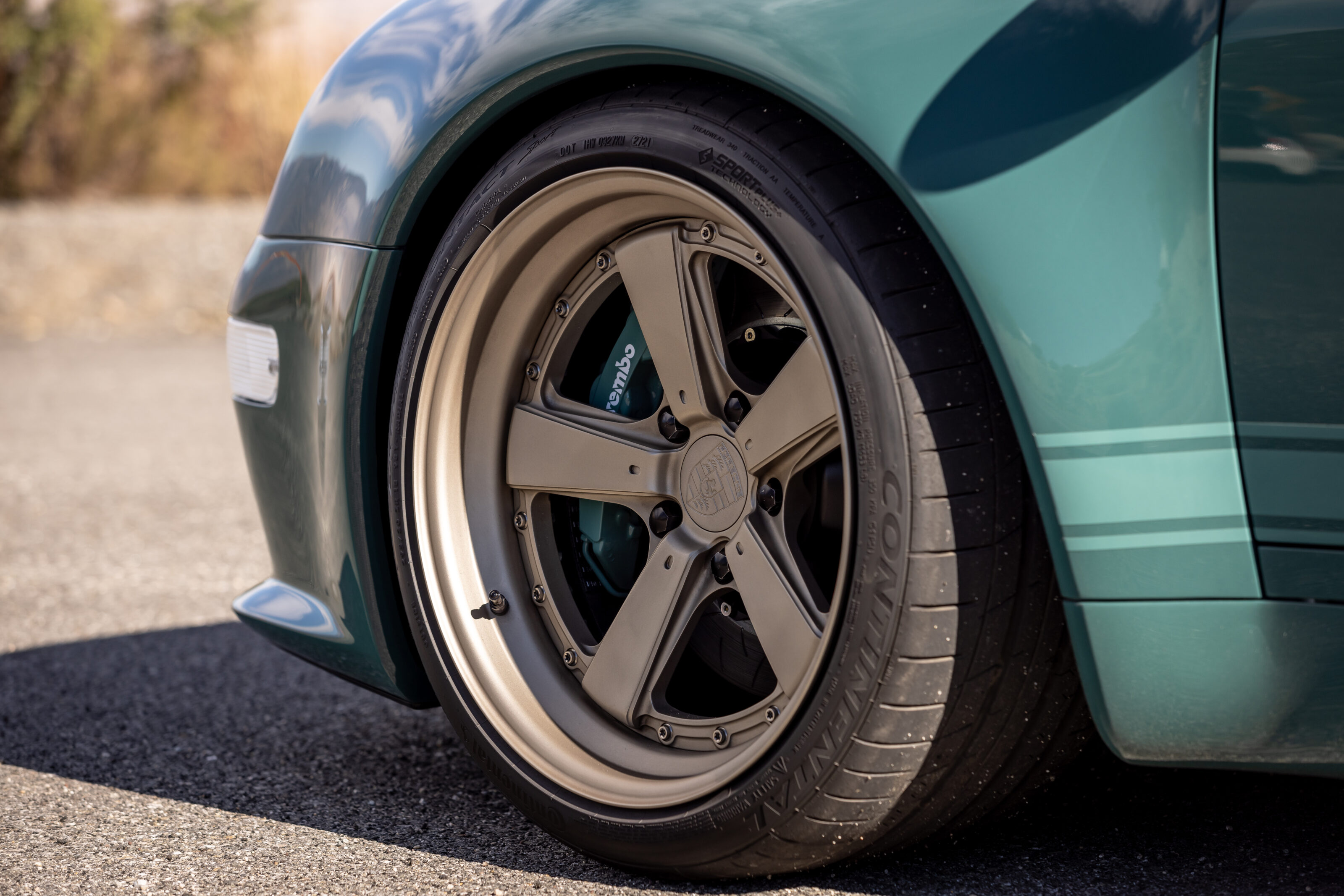
The rear increases that to 13-inches wide, with a 335/30/18 tyre. The wheels are the Gunther Werks T-6061 forged aluminium three-piece rim, though there’s the option of a centre lock forged magnesium wheel with Dymag carbon-fibre barrels, which drop the unsprung weight of each wheel unit in half.
Not that there’s any issue with the ride quality and precision as it’s currently specified, the worry that such a sizeable contact patch of rubber would translate to a busy ride is simply not the case. Those electronic dampers undoubtedly help, because despite the ability to pick between a default, or comfort or sport modes, the system constantly monitors what’s going on, at a rate of 1000 times a second, to balance ride comfort along with taut responsiveness. It does so very convincingly indeed.
There’s masses of mechanical grip, the Speedster’s square stance making for a quick, accurate front axle. Turn-in precision is, with the exception of its Coupe relation, unlike any air-cooled 911 I’ve ever driven before. The steering response isn’t just immediate in its movement, but fine in its weighting, with detailed information coming to your hands via the beautifully contoured hollow carbon fibre steering wheel that’s Gunther Werks’ own design. It also looks fantastic.
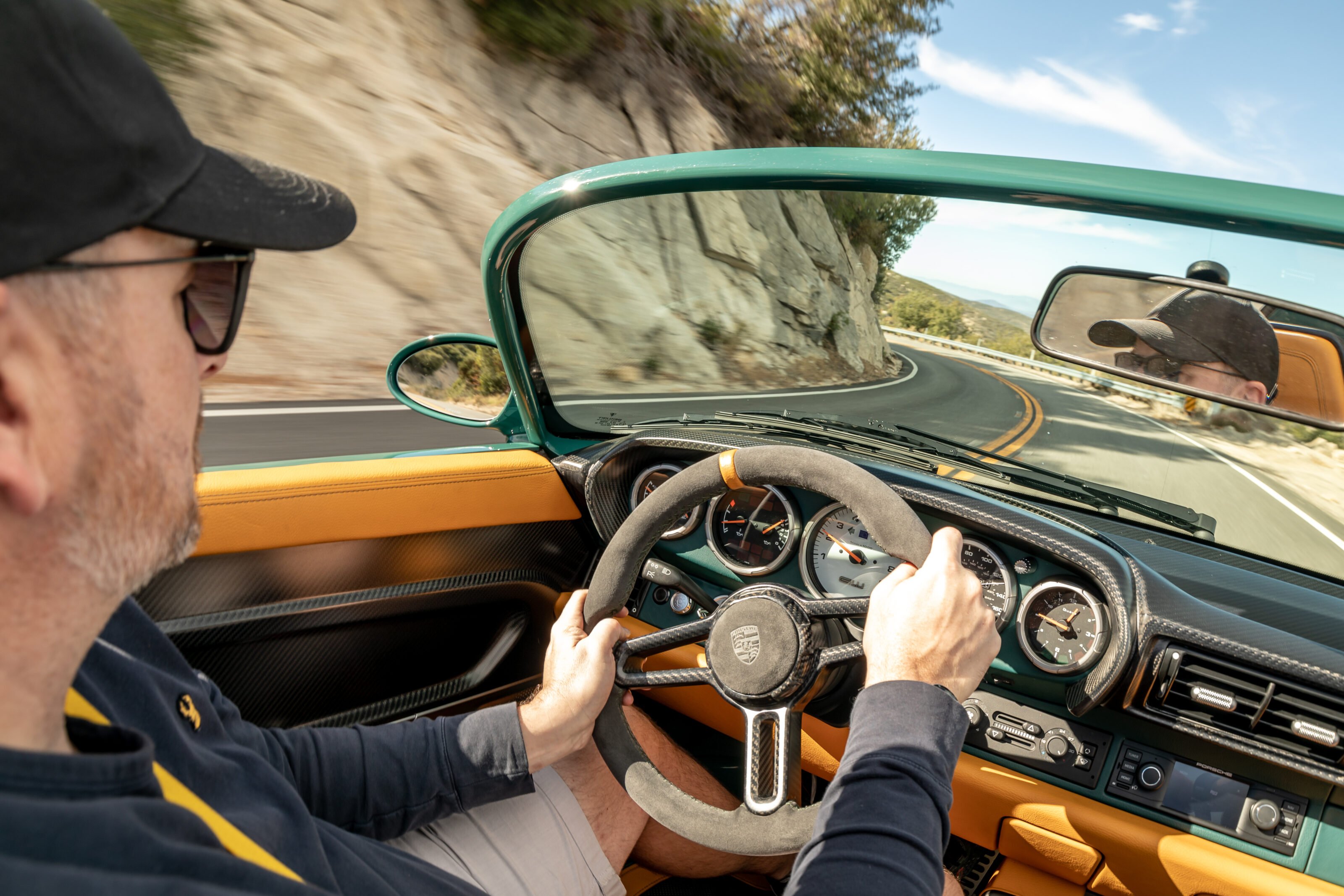
The way the front end responds is echoed in the way what’s under the duck-tailed engine cover out back conducts itself. Again, Nam’s cherry-picked expertise, with Jeff Gamroth from Rothsport Racing being responsible for the air-cooled flat-six. Enlarged to 4.0-litres, it’s an absolute masterpiece, the build using the original casing, but featuring custom internals and auxiliaries specified, and in many cases entirely designed, by Gamroth himself.
There are billet barrels and crank, Mahle pistons and forged conrods, equal length stainless steel headers, coil on plug ignition and a GT3 plenum, with a fuel injection system and throttle bodies of Gamroth’s own design. Even the cooling fan, which looks all but identical to a stock 911, is completely bespoke, having been redesigned by engineers whose day job is designing jet turbine blades.
Their input not just significantly improved airflow, but did so while reducing weight, drag and power usage. Further, sizeable, reductions in parasitic losses have been made in areas such as the power steering, with the fitment of an electric pump for the hydraulic system. It not only uses a fraction of the power of the stock set-up, but is significantly lighter, too.
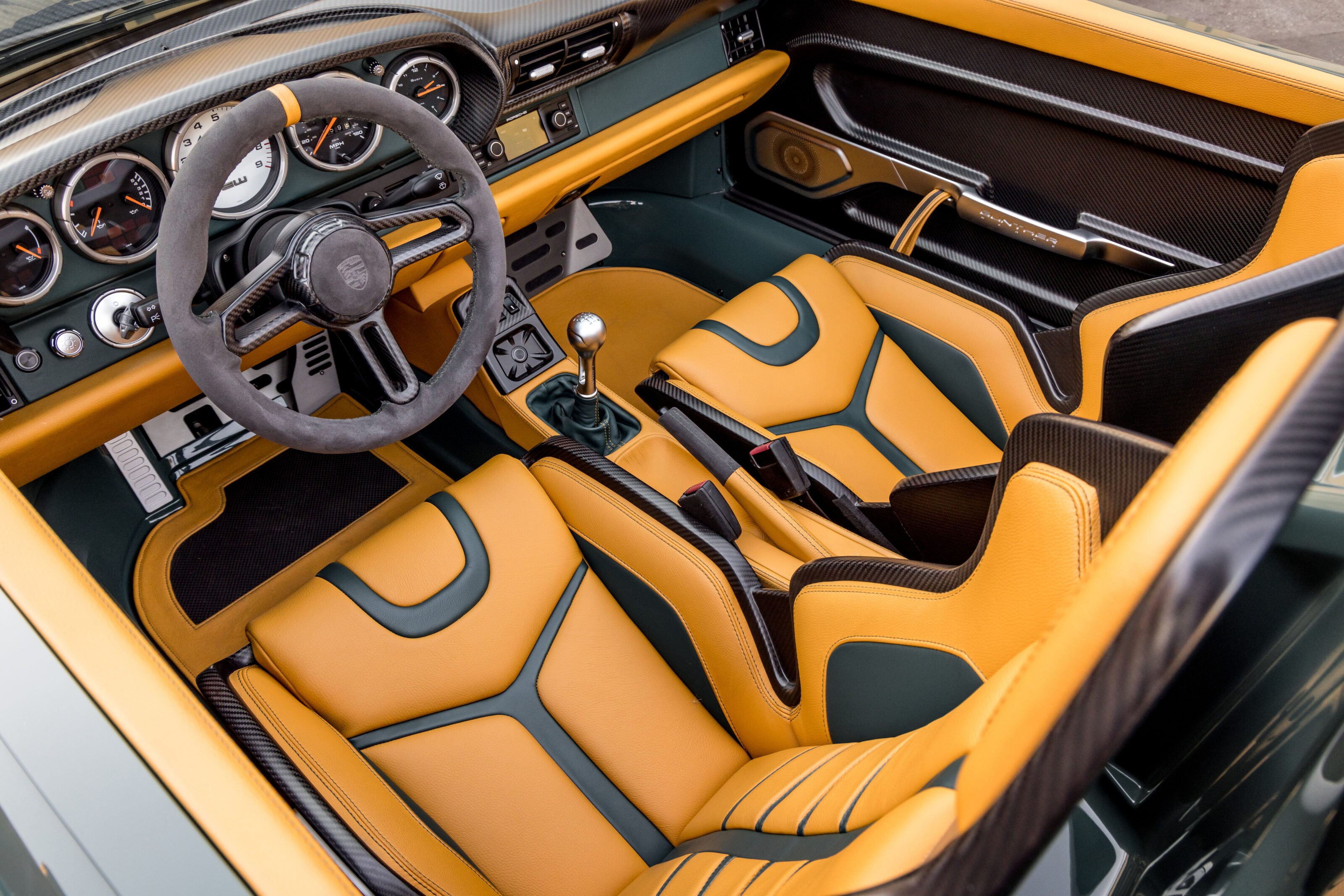
The result is an air-cooled engine with a specific output of more than 73kW per litre. Gunther Werks quotes 294kW without the Sport button pressed, with 316kW available the second the dual-mapped Motec ECU modes are in play. It really is an engine that needs to be experienced to be believed. The lightened internals, in conjunction with the lightweight flywheel deliver lightning response, it revving seemingly without any internal inertia, that immediacy matched by all the other controls in the car.
The gearshift from the six-speed manual is quick and light, though a slightly shorter throw through its travel would improve it further. It’s pretty much the sole area where I’d be asking for a change in the set-up. Elsewhere it feels so correct, the way it translates input to response being so utterly faithful and pure it connects in a way that’s uncommon, if not completely unheard of today.
Add a soundtrack that’s pure racer as you reach the 7800rpm redline, that you find yourself wringing it out to its maximum at every opportunity, the glorious sound of it filling the valleys, and ricocheting off the rock walls that punctuate the drive on the 243.
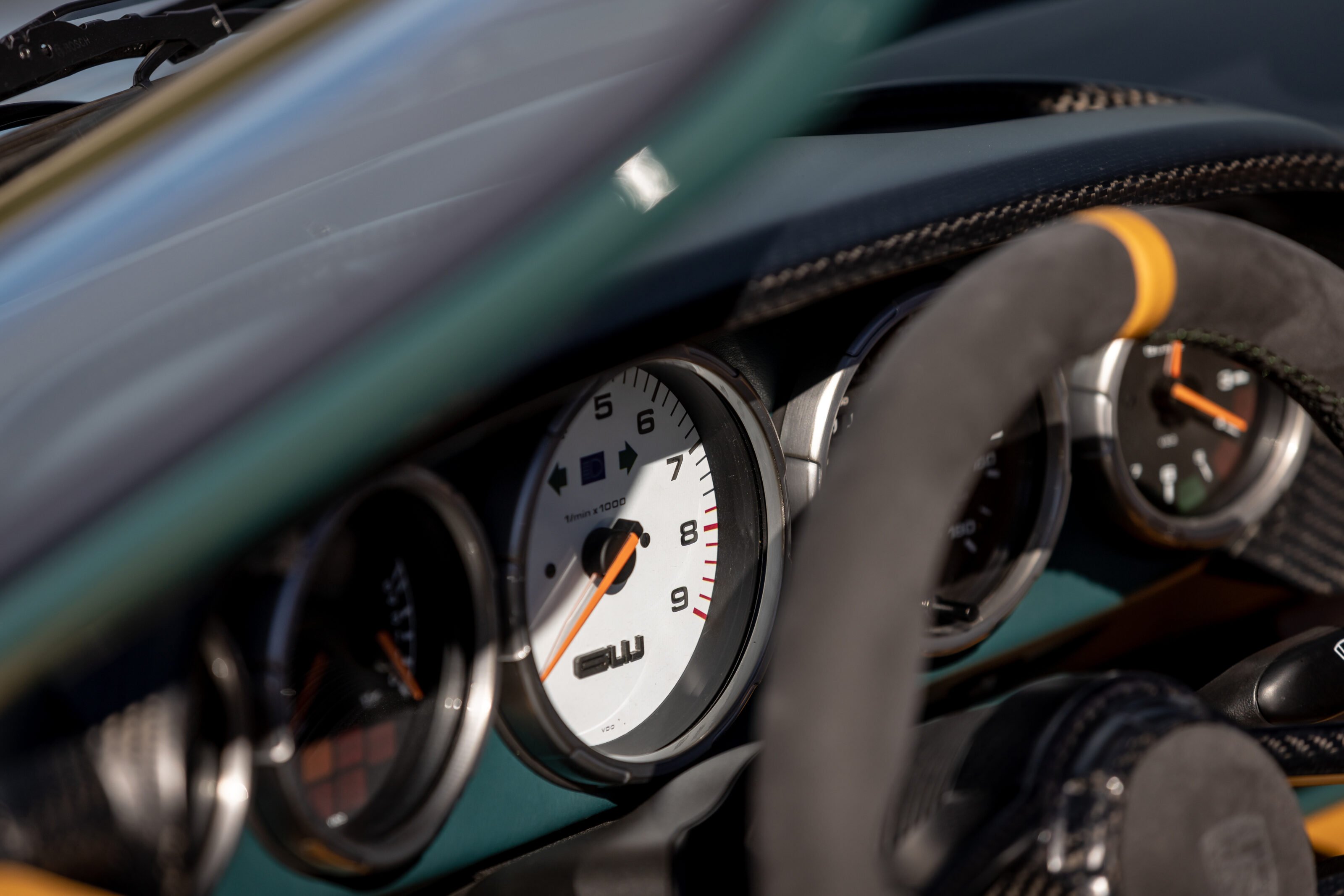
Despite its obvious beauty and exacting attention to detail throughout, Gunther Werks set out to build a driver’s car first, and it delivers exactly that, with old-school thrills and engagement applied via contemporary engineering and knowledge. It’s apparent in the way it changes direction, or the way the engine delivers its ample performance, that 316kW not having to work too hard to propel the Speedster’s low mass to eye-widening effect.
That’s true too of the brakes, which are never short of stopping power, the pedal being the perfect platform to roll your foot off for rev-matched downshifts that delight. Every. Single. Time.
Over the already extraordinary Coupe, the Speedster gains an elemental level, which, rightly, could be construed as compromise in less than perfect circumstances, but here, on this undulating, switchback ribbon of tarmac and in this weather there’s genuinely no other car I’d rather be driving. It really is that good, a blast from the past, engineered forward, and very convincingly indeed.
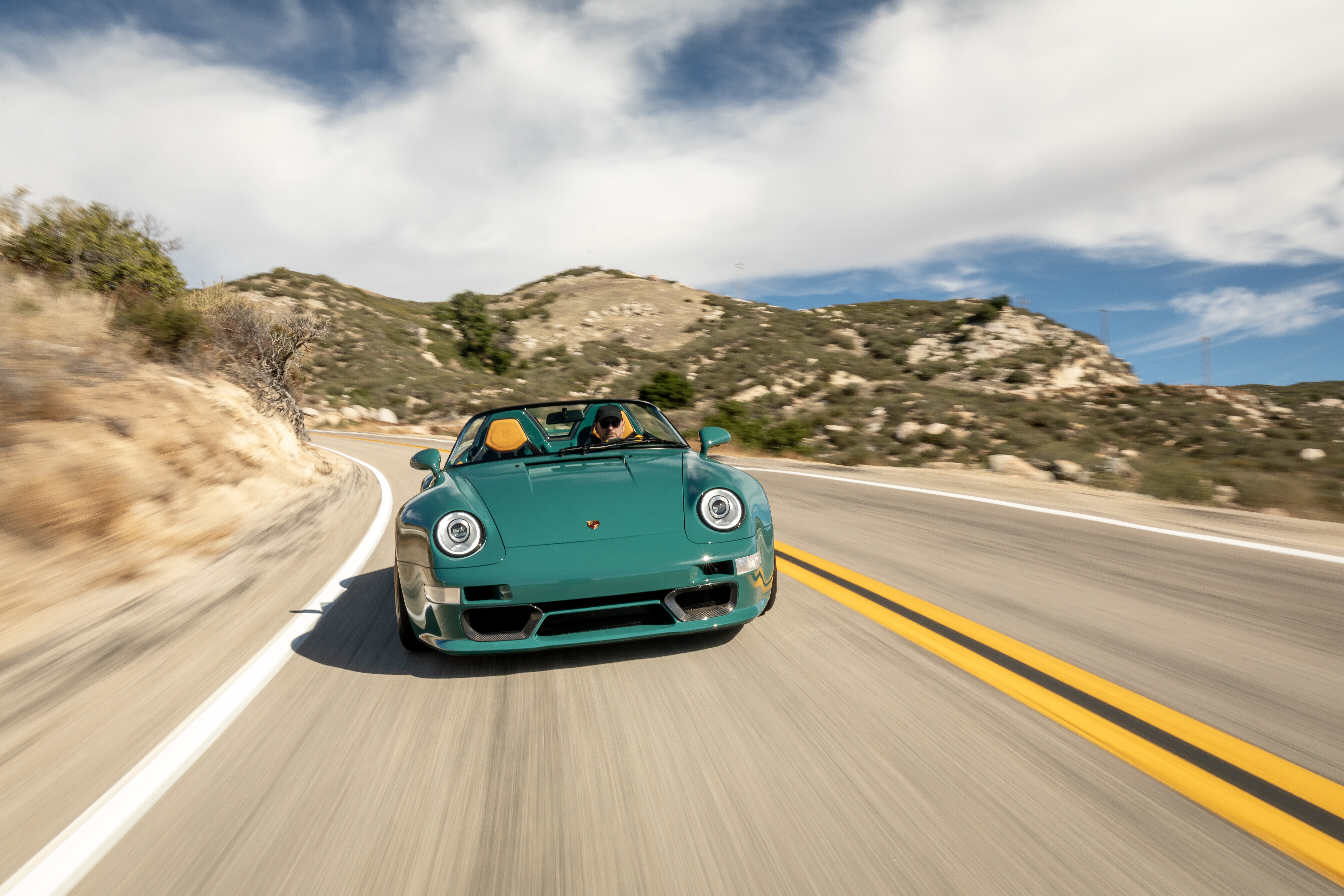
Things we like
- Theatre
- Accessibility
- Dynamics
- Stamina
- Exclusivity
Not so much
- Expensive
- Sold out
- Long-ish gear throw
- On-road compromises



